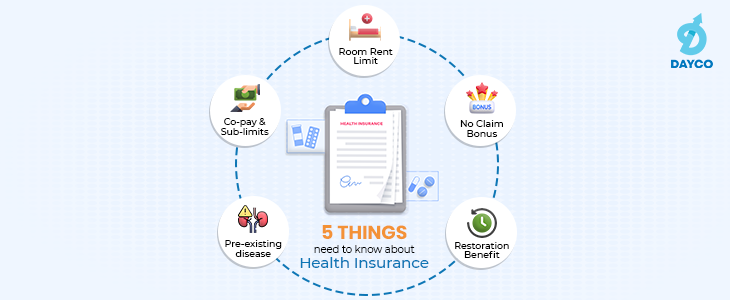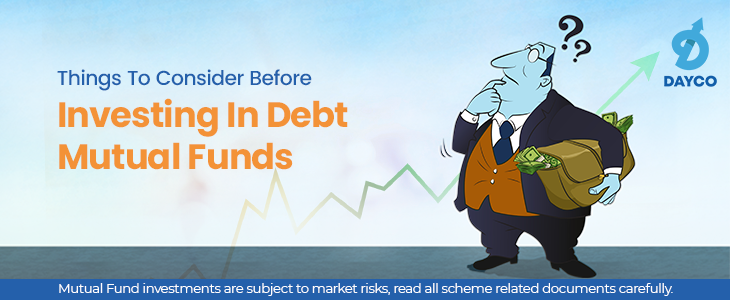Are you considering investing in debt mutual funds to diversify your investment portfolio and potentially earn steady returns? Or looking to invest for your short- or medium-term goals? Before you take the plunge into the world of debt funds, it’s essential to arm yourself with knowledge about how these funds operate and the risks involved. Debt funds offer a plethora of options (16 categories to be exact) catering to various needs, but understanding their intricacies is paramount to making informed decisions. From the dynamics of the NAV movement to the risks like credit and interest rate fluctuations, we’ll learn everything you need to know before investing in debt funds, empowering you to invest with confidence and knowledge.
Debt Fund NAV and Market Interest Rate
The Net Asset Value (NAV) of a debt fund is closely linked to prevailing interest rates. As interest rates rise, bond prices fall, and vice versa. This relationship affects the NAV of debt funds.
However, it’s essential to recognize that the price of bonds (which affects the NAV) is not solely determined by interest rates. Credit risk and market conditions (supply and demand forces) also play a significant role. Therefore, while fluctuations based on interest rate movements exist, real-world fluctuations can be influenced by various factors, leading to sudden swings in NAV. Debt mutual funds are market-linked products and there is no guaranteed return.
Risks in Debt Funds
- Interest Rate Risk: One of the primary risks in debt funds is interest rate risk, also known as duration risk. As mentioned above this risk arises from the relationship between market interest rate and the price of a bond. Bonds with longer durations tend to be moree volatile in price, especially when interest rates fluctuate. This risk applies to all bonds. Funds with higher duration can see higher NAV volatility.
- Credit Risk: The other significant risk in a debt fund is credit risk. Higher returns are often associated with higher risk, particularly with bonds issued by weaker businesses. For instance, an A-rated bond may offer higher returns than an AAA-rated bond, but it comes with the risk of default. If a bond issuer defaults, the NAV of the debt fund can plummet, leading to potential losses for investors. Hence, it is also important that you do not chase high returns in a debt fund.
Selecting the Right Debt Fund
When choosing a debt fund, it’s essential to focus on your investment goals and risk tolerance. Here are some guidelines to help you select the right fund:
- Consider Portfolio Maturity: Match your investment horizon to the fund’s average maturity. You should opt for a fund with an average portfolio maturity significantly lower than when you will be needing the money. This reduces the impact of interest rate fluctuations on the fund’s NAV.
- Evaluate Credit Risk: Assess the credit risk taken by the fund by examining its portfolio holdings. Lower-risk funds typically invest in highly-rated securities, while higher-risk funds may venture into lower-rated bonds. Choose a fund with a higher proportion of holdings in high-rated securities.
- Past returns do not matter: Do not look at the past return of a debt fund. The fund’s current portfolio determines its return. The expected return from a debt fund is based on the YTM (Yield to Maturity) of a fund. But do not chase funds with high YTM. Remember that high YTM means higher risk – either interest rate risk or credit risk. Follow the first two points.
- Keep it simple: Don’t fall into the trap of analysis paralysis while deciding to invest in debt funds. Just use some standard best practices. For short-term needs, consider investing in liquid funds or money market funds. These categories generally have lower NAV volatility and are suitable for short-term goals. If you have long-term financial goals, you may explore other categories such as short-term funds, corporate bonds, Gilt funds, banking and PSU funds, or dynamic bond funds. Remember to choose funds with high credit quality.
Final Thoughts
Before investing in debt funds, thoroughly research and understand the risks involved. Avoid chasing higher returns in debt funds without considering the associated risks. By selecting funds aligned with your investment horizon and risk appetite, you can invest in debt mutual funds more confidently and effectively.
If you have a question, share it in the comments below or DM us or call us – +91 9051052222. We’ll be happy to answer it.
~Nischay Avichal
















